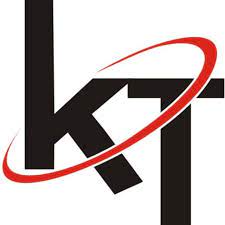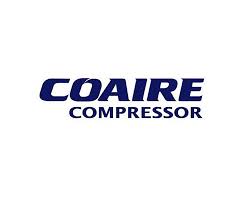
Get Instant Solution By an Expert Advisor
(4.8)


BIS CRS registration for nickel-cadmium batteries is mandatory for manufacturers, importers and brand owners who sell sealed secondary cells and batteries in India. The certificate proves the product meets Indian safety and performance norms and lets you legally sell the battery in the market.
Batteries can be hazardous if they fail. The CRS makes sure batteries meet standards for safety and performance. It protects consumers and supports trustworthy brands. This also helps importers clear customs without delay.
The scheme covers sealed nickel-cadmium cells and batteries intended for portable applications, and related battery packs that fall under the notified Indian Standards. Check the BIS product list for exact scope before testing.
Manufacturers in India must apply. Importers and authorised Indian representatives must also register models. Brand owners who market cells under a label must comply. If you sell in India, you must follow CRS rules.
BIS CRS Certificate Registration for CCTV Cameras
Gather these documents before you apply:
BIS will also receive the reports supplied by the NABL accredited or BIS recognised labs. The tests are done in accordance with the Indian Standards that are in line with IEC standards. The electrical safety, charging and discharging behaviour, temperature performance, and leakage are tested. Make sure you use a lab that has experience in battery testing so that there is less rework.
BIS Certification for Steel Imports Guidelines updated in 2025
Fees include application charges, inclusion charges for test reports and annual registration fees. Labs charge separately for testing. The BIS fee structure shows processing and inclusion costs which vary by number of test reports. Typical time to grant is a few weeks to a few months depending on lab availability and inspections. Plan tests early to avoid launch delays.
After registration you must label products with the CRS mark and unique number. Keep production and sales records. Report production figures to BIS as required. Any change in design or component that affects safety needs fresh tests and inclusion. Market surveillance checks may follow to verify compliance.
Applications fail when test reports come from non-accredited labs, when model numbers do not match, or when documents are incomplete. Mismatched sample and production units also cause refusal. Pre-check documents and use correct model identifiers to avoid delay
The promotion of unregistered batteries and mislabeled units may result in fines, confiscation of products and import restrictions. Traditions may hold unregistered deliveries. Recidivists are assigned heavier fines and may be delisted by the CRS.
Store retention test reports, production records, invoices and label proofs. Retain documents over a number of years because BIS can audit or conduct market surveillance. Records are helpful in facilitating inspection and traceability
BIS refined CRS guidance and updated lab acceptance criteria in recent notices. Digital submission of lab reports and QR code linking for quick verification are becoming common. Check BIS CRS portal frequently for the latest circulars.
Confirm the exact Indian Standard your product must meet. For nickel-cadmium cells the standard aligns with safety norms. Check the IS number on the BIS CRS list. Ask the lab to give test results in BIS format
Label each test sample with batch and heat numbers. Keep a sample register. Note who packed and who sent the sample. When inspectors arrive, show batch records. Traceability proves production and reduces disputes.
If you import appoint an Indian authorised representative. Keep invoices and bills ready. Ask suppliers to share factory and material test certificates. Early planning avoids port holds. Customs can ask for CRS proof, so prepare ahead.
BIS CRS makes the market safer. Good labs, clear records and early planning cut delays. Use a checklist and track timelines to launch. BIS CRS can be complex for new applicants. Agile Regulatory prepares documents, coordinates NABL tests, files the application and follows up with BIS. They track deadlines and help manage factory inspections. With expert help you cut mistakes and get to market faster.

 Nishi Chawla
Nishi Chawla
04 Nov, 2025

 Nishi Chawla
Nishi Chawla
04 Nov, 2025

 Nishi Chawla
Nishi Chawla
03 Nov, 2025

 Nishi Chawla
Nishi Chawla
03 Nov, 2025

 Nishi Chawla
Nishi Chawla
31 Oct, 2025

Get Instant Solution By an Expert Advisor
(4.8)
We simplify compliance through a proven 4-step process: Consultation, Documentation, Submission, and certification. From understanding requirements to getting final approvals, we deliver a smooth, timely, and fully compliant journey for your business.
What our customer says about us
Fantastic support from the team. Their expertise transformed our approach, driving remarkable outcomes. A must-have partner for businesses seeking effective consulting solutions. Highly recommended.

KTPL Instruments
Agile Regualtory delivers exceptional solutions. Their insightful guidance streamlined our processes and boosted profitability. Highly recommended for businesses seeking expert consulting services to thrive.

Justrack IOT
Impressed by Agile Regulatory's expertise. Their strategic insights and practical solutions have elevated our business operations. A reliable partner for effective consulting services. Highly recommended for growth-focused businesses.

Coaire Compressor
Extraordinary consulting services. Their insightful solutions and dedicated team reshaped our business, driving remarkable improvements. Highly recommend it for transformative results.

Easy Polymer
Incredible experience with Agile Regulatory. Their innovative strategies and expert advice revitalized our business model, resulting in impressive growth. Highly recommend their exceptional consulting services.

Tarus International
Top-tier consulting! offered strategic solutions that revolutionized our approach. Their deep expertise and personalized guidance made a significant impact on our success. Highly recommend their services.

Anchor Weighing
Agile Regulatory exceeded expectations! Their tailored solutions, expertise, and proactive approach led to remarkable results. Highly recommend for businesses seeking impactful and strategic guidance.

AM Capacitor
Outstanding service! delivered targeted solutions with professionalism and expertise. Their insights elevated our business strategies, resulting in noticeable growth. Highly recommended for exceptional consultation.

Imaxx Pro Aquistic
Leave a Reply
Your email address will not be published. Required fields are marked *